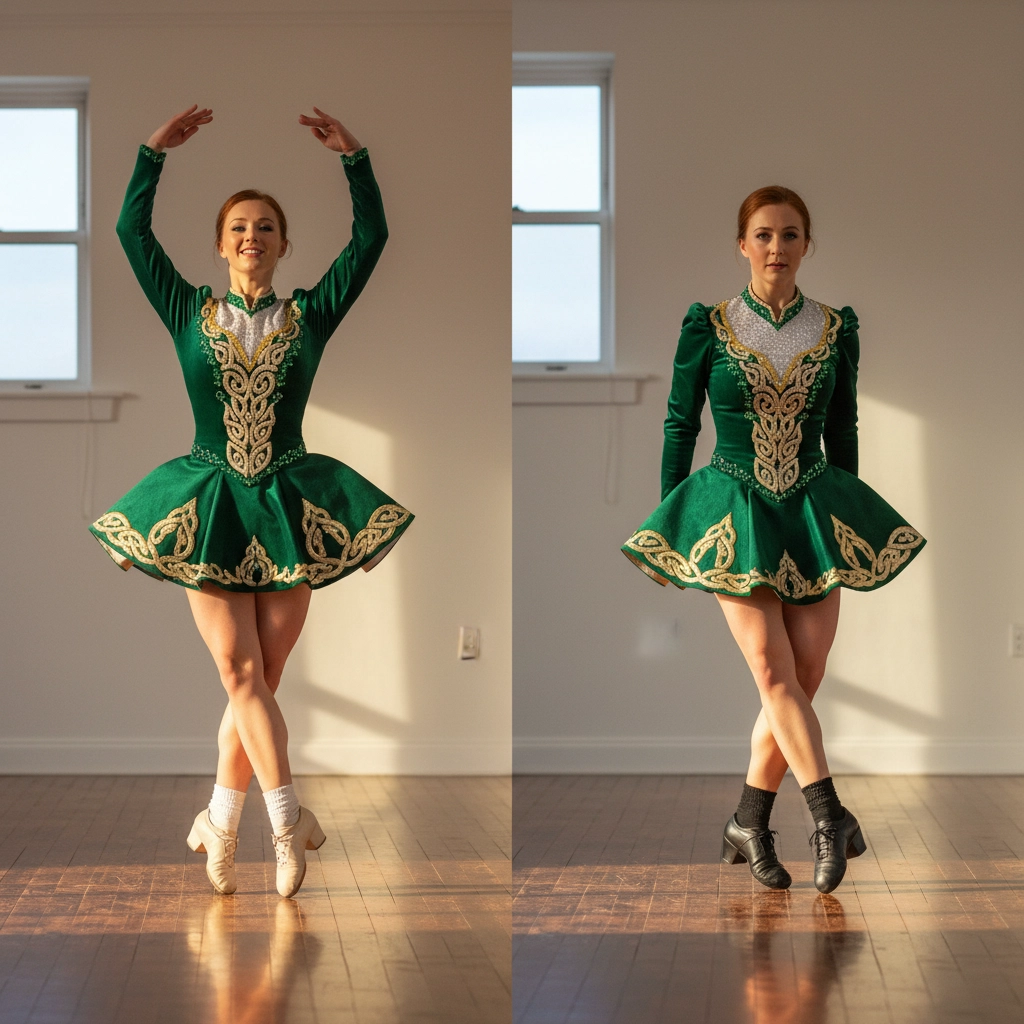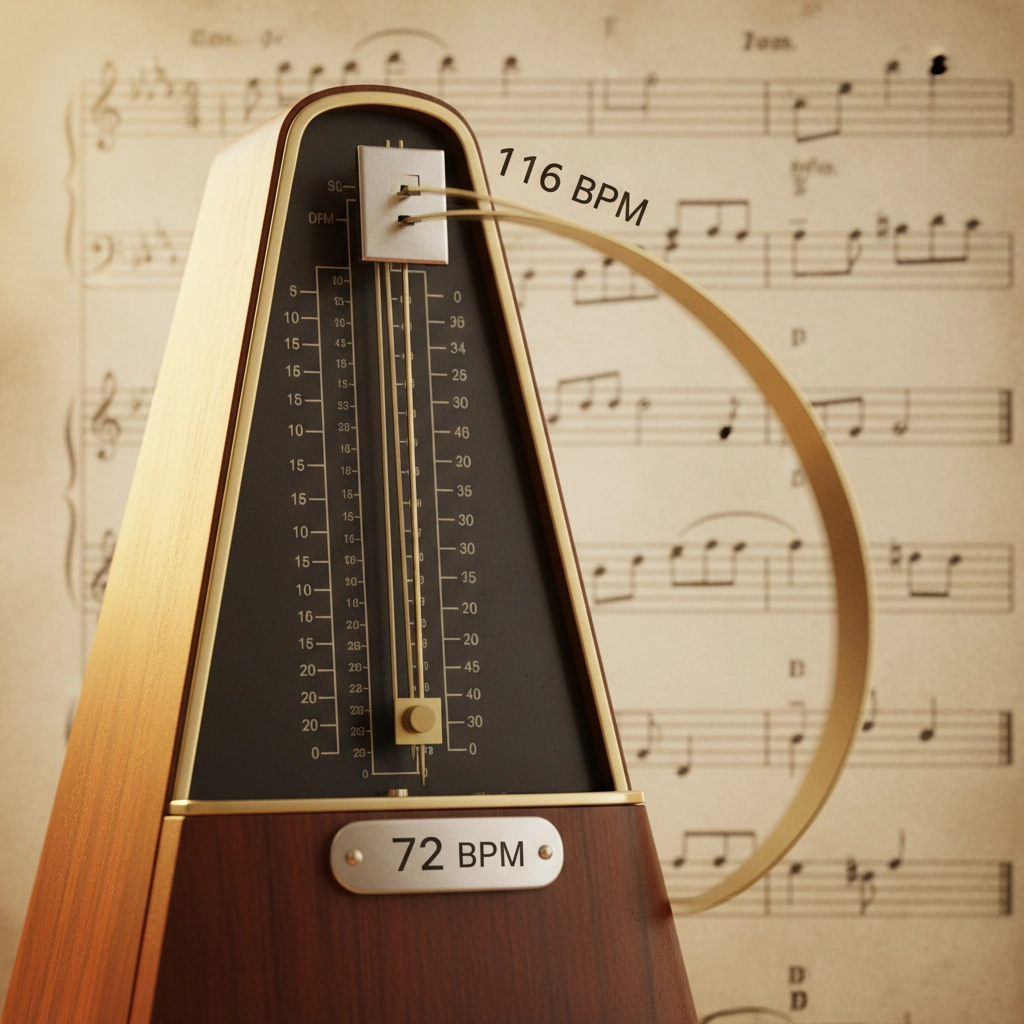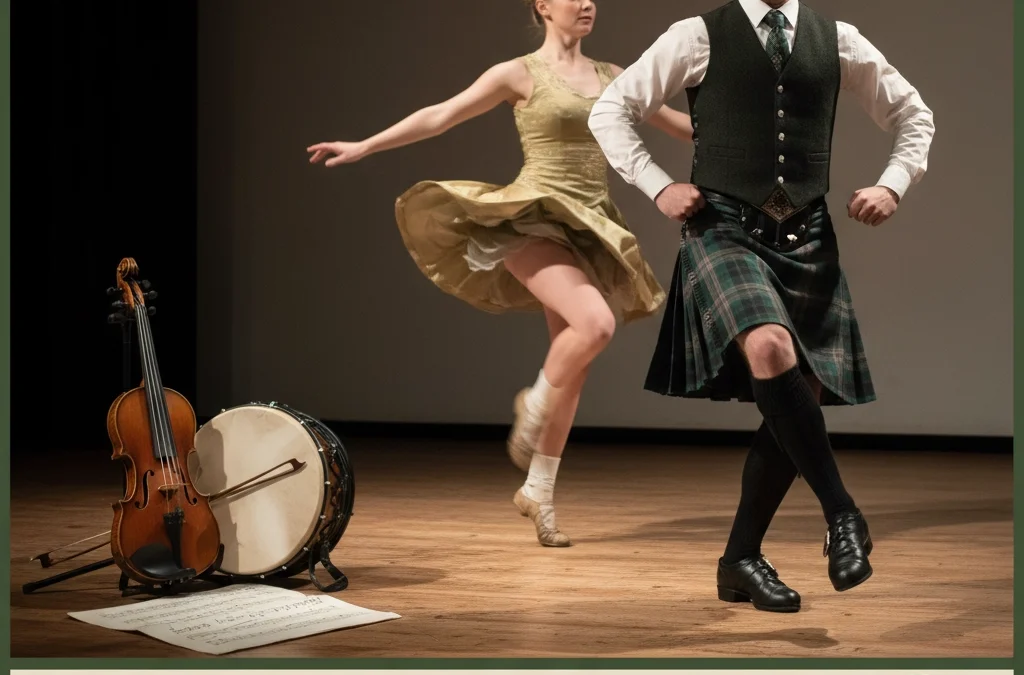In the captivating world of Irish dance, few revelations are as fascinating as discovering that the powerful, stomping heavy jig and the graceful, soaring light jig share the same musical DNA. Yes, you read that correctly – the mesmerizing heavy jig is essentially the same tune as a light jig, just beautifully slowed down to create an entirely different dance experience.
This remarkable relationship between two of Irish dance's most beloved forms showcases the ingenious way traditional music can be transformed through tempo alone, creating distinct artistic expressions that each captivate audiences in their own unique way.
The Musical Foundation: Same Song, Different Story
At their core, both light jigs and heavy jigs (also known as treble jigs) share the same fundamental musical structure. Both dances are performed in the enchanting 6/8 time signature, creating that distinctive lilting rhythm that makes Irish music so instantly recognizable and irresistibly toe-tapping.
The magic lies not in different melodies, but in how the same tune can tell completely different stories through tempo variation. It's like hearing your favorite song performed as both an energetic pop anthem and a soulful ballad – the essence remains, but the emotional impact transforms entirely.

Understanding the Tempo Transformation
The tempo difference between these two dance forms is truly striking and reveals the artistry behind traditional Irish music. Light jigs dance along at an exhilarating 116 beats per minute during feiseanna (competitions), creating that sense of weightless flight that makes dancers appear to barely touch the ground.
Heavy jigs, in contrast, embrace a more measured pace. Beginner dancers typically perform them at 92 beats per minute, while advanced dancers slow things down even further to a contemplative 72 beats per minute for the non-traditional slow treble jig. This dramatic reduction in tempo – nearly half the speed of a light jig – completely transforms the character of the music from ethereal lightness to grounded power.
The Transformation in Performance Style
While the musical foundation remains constant, the way dancers interpret and express these tunes creates two entirely different art forms. The light jig, performed in soft ghillies, emphasizes grace, elevation, and flowing movements that seem to defy gravity. Dancers appear to float across the stage, their movements resembling delicate brushstrokes painting stories in the air.
The heavy jig tells a completely different tale. Performed in hard shoes, this dance form transforms the same musical phrases into percussive poetry. Every step becomes a rhythmic conversation between dancer and music, with stomps, trebles, and clicks adding layers of sound that weren't present in the light jig version.

The Historical Evolution of This Relationship
The relationship between these two dance forms speaks to the incredible adaptability and richness of Irish musical tradition. Throughout centuries of cultural development, Irish musicians and dance masters discovered that the same beautiful melodies could serve multiple purposes, creating a more diverse and dynamic performance repertoire.
This discovery wasn't accidental – it represents the practical wisdom of traditional communities. Why create entirely new tunes when the existing ones could be masterfully adapted to showcase different technical skills and artistic expressions? This approach allowed dance masters to teach students a broader range of movements while maintaining musical continuity and cultural coherence.
The evolution also reflects the Irish approach to art: nothing is wasted, everything has potential for transformation, and beauty can be found in both the swift and the deliberate, the light and the heavy, the soaring and the grounded.
Technical Differences That Create Distinct Art Forms
Despite sharing the same musical source, the technical execution of light and heavy jigs creates two completely different experiences for both dancers and audiences. The light jig demands incredible control and precision to maintain that floating quality while moving at high speed. Dancers must master the art of appearing effortless while executing complex footwork that barely disturbs the ground beneath them.
Heavy jigs require a completely different skill set. The slower tempo allows for more intricate percussive work, but demands tremendous strength and control to execute clean, sharp sounds. Every movement must be deliberate and powerful, creating a rhythmic conversation that adds new layers to the original melody.

The Footwear Factor: Soft Meets Hard
One cannot discuss the transformation from light to heavy jig without acknowledging the crucial role of footwear. Light jigs, performed in soft ghillies, allow for that signature silent grace – dancers can execute complex movements while maintaining an almost supernatural quiet that lets the music shine without percussive competition.
Heavy jigs transform the same melodies through the addition of hard shoes, turning every step into a musical instrument. The dancer becomes both performer and musician, adding rhythmic complexity that wasn't present in the original light jig interpretation. This transformation showcases how the same tune can accommodate entirely different artistic visions.
Why This Matters for Modern Dancers
Understanding this relationship between light and heavy jigs offers profound insights for dancers at all levels. Recognizing that these seemingly different dances share the same musical foundation can help students better understand rhythm, timing, and musical interpretation across different dance styles.
For beginners, this knowledge can make learning both forms more accessible. Once you understand the musical structure in one form, you already have half the battle won for the other. The challenge then becomes mastering the different physical techniques and artistic interpretations required by each style.
Advanced dancers can use this understanding to deepen their musical connection and create more nuanced performances. Knowing how the same tune can support both ethereal lightness and grounded power opens up new possibilities for artistic expression and interpretation.

The Cultural Significance of Musical Adaptation
This beautiful relationship between light and heavy jigs represents something larger than just dance technique – it embodies the Irish cultural approach to creativity and resourcefulness. Rather than viewing constraints as limitations, traditional Irish culture transforms them into opportunities for innovation and artistic expression.
The ability to take one musical foundation and create two distinct art forms demonstrates the incredible depth and sophistication of Irish traditional arts. It shows how master artists can find infinite possibilities within established frameworks, creating variety and richness without abandoning cultural authenticity.
Learning Both Forms: A Journey of Discovery
For those inspired to explore both light and heavy jigs, the journey offers a unique opportunity to experience how tempo and technique can completely transform artistic expression. Starting with either form provides a musical foundation that will enhance understanding of the other, creating a more complete appreciation of Irish dance artistry.
At Kane Irish Dance, we celebrate this beautiful relationship between dance forms, helping students understand not just the steps, but the cultural and musical connections that make Irish dance so endlessly fascinating. Whether you're drawn to the soaring grace of light jigs or the powerful rhythms of heavy jigs, you're participating in a tradition that values both innovation and continuity.
The revelation that heavy jigs are essentially light jig tunes slowed down opens our eyes to the ingenious simplicity and profound artistry embedded in Irish traditional culture. It reminds us that sometimes the most beautiful discoveries are hiding in plain sight, waiting for us to listen more carefully to the music that moves our feet and stirs our souls.
This remarkable relationship continues to inspire dancers and musicians today, proving that tradition and innovation can dance together in perfect harmony, each step revealing new depths in melodies that have captivated hearts for generations.

